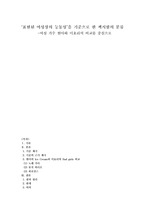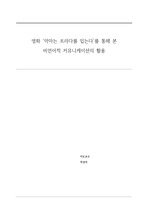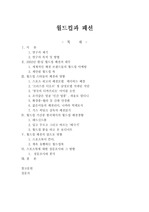

PARTNER
검증된 파트너 제휴사 자료
화장은 남성의 얼굴을 매력적으로 보이게 하는가? (Does make-up make men's faces appear more attractive?)
22 페이지
최초등록일 2025.03.16
최종저작일
2019.12

-
서지정보
· 발행기관 : 한국심리학회
· 수록지 정보 : 한국심리학회지:일반 / 38권 / 4호 / 625 ~ 646페이지
· 저자명 : 홍락균, 최훈
초록
화장이 여성의 전유물이라는 인식은 현대에 들어서서 점차적으로 사라지고 있으며, 최근에는 많은 남성들이 화장을 한다. 하지만 화장하는 남성들에 대한 사회적인 의미가 항상 긍정적인 것만은 아니다. 과연 화장은 남성을 매력적으로 만드는가? 이 질문에 대해 실험적인 방법을 통해 그 답을 찾아보았다. 본 연구는 총 다섯 단계(민낯, 피부화장, 눈썹화장, 아이라인화장, 아이섀도우화장)로 화장한 남성 얼굴을 자극으로 사용하여, 화장 단계별로 매력도가 어떻게 지각되는지(실험 1), 화장의 탐지 정도가 달라질 수 있는지(실험 2)를 확인하였다. 실험 1에서는 남성 화장의 긍정적인 효과와 부정적인 효과가 동시에 나타나 눈썹화장단계까지는 매력이 상승한 반면, 아이섀도우화장단계 이후에는 매력이 하락하는 것을 확인하였다. 실험 2에서는 화장이 더해짐에 따라 화장을 탐지하는 정도가 높아지는 것을 확인하였다. 특히, 실험 1에서 매력이 상승했던 눈썹화장단계까지는 화장 탐지 정도가 높지 않았지만, 매력이 하락했던 아이라인화장 이후 단계에서는 급격하게 상승하는 것으로 나타났다. 실험 1, 2를 종합하면, 화장의 단계가 높아지면 어느 정도까지는 매력도가 증가하지만, 그 이상에서는 매력도가 감소하며, 이는 화장의 탐지와 관련이 있는 것으로 보인다. 본 연구는 남성 화장에 대해 실험 패러다임을 적용한 국내 최초 연구로서 화장을 통해 남성 얼굴이 매력적으로 보일 수 있는지를 직접적으로 확인하였다. 동시에 화장과 남성 얼굴 매력과의 관계가 여성의 경우와는 다르며, 다양한 상향적 및 하향적 요인에 대한 체계적인 후속 연구의 필요성을 제안하였다.영어초록
Today, the idea that only women can wear makeup is no longer accepted. Although many men do wear makeup, the social responses to those men are not always positive. Does makeup actually make men’s faces appear more attractive? The current study finds the answer for this question through psychological experiments. As stimuli for these experiments, male faces that were made up in five steps (1: no makeup, 2: skin makeup, 3: eyebrow makeup, 4: eyeliner makeup, 5: eyeshadow makeup) were employed. In the experiments, after presenting male faces with makeup, participants were asked to rate how attractive those faces looked (experiment 1) and how heavily made up those faces appeared (experiment 2). A 7-point likert scale was used in both experiments: a higher point means more attractive and heavier, respectively. In experiment 1, the results showed the inverted U curve. There was an increase in attractiveness from step 1 (no makeup) to step 3 (eyebrow makeup), and after that there was a decrease. The results of experiment 2 showed that the more make-up applied, the easier participants can detect the degree of make-up. In particular, until step 3 (eyebrow makeup), faces were perceived as having light makeup; in steps 4 and 5, the faces were perceived as having (relatively) heavy makeup. Collectively, as the level of make-up increases, the perceived attractiveness increases to a certain point, but after that, it decreases, which seems to be related to the detection of make-up. This study was the first in Korea to explore male makeup with an experimental paradigm, which directly confirmed whether the male face can be perceived as more attractive with makeup or not. The relationship between makeup and the attractiveness of the male face is different from that of the female, suggesting that systematic follow-up studies are required to identify the effect of various bottom-up and top-down factors.참고자료
· 없음태그
-
자주묻는질문의 답변을 확인해 주세요

꼭 알아주세요
-
자료의 정보 및 내용의 진실성에 대하여 해피캠퍼스는 보증하지 않으며, 해당 정보 및 게시물 저작권과 기타 법적 책임은 자료 등록자에게 있습니다.
자료 및 게시물 내용의 불법적 이용, 무단 전재∙배포는 금지되어 있습니다.
저작권침해, 명예훼손 등 분쟁 요소 발견 시 고객센터의 저작권침해 신고센터를 이용해 주시기 바랍니다. -
해피캠퍼스는 구매자와 판매자 모두가 만족하는 서비스가 되도록 노력하고 있으며, 아래의 4가지 자료환불 조건을 꼭 확인해주시기 바랍니다.
파일오류 중복자료 저작권 없음 설명과 실제 내용 불일치 파일의 다운로드가 제대로 되지 않거나 파일형식에 맞는 프로그램으로 정상 작동하지 않는 경우 다른 자료와 70% 이상 내용이 일치하는 경우 (중복임을 확인할 수 있는 근거 필요함) 인터넷의 다른 사이트, 연구기관, 학교, 서적 등의 자료를 도용한 경우 자료의 설명과 실제 자료의 내용이 일치하지 않는 경우
찾으시던 자료가 아닌가요?
지금 보는 자료와 연관되어 있어요!
문서 초안을 생성해주는 EasyAI





